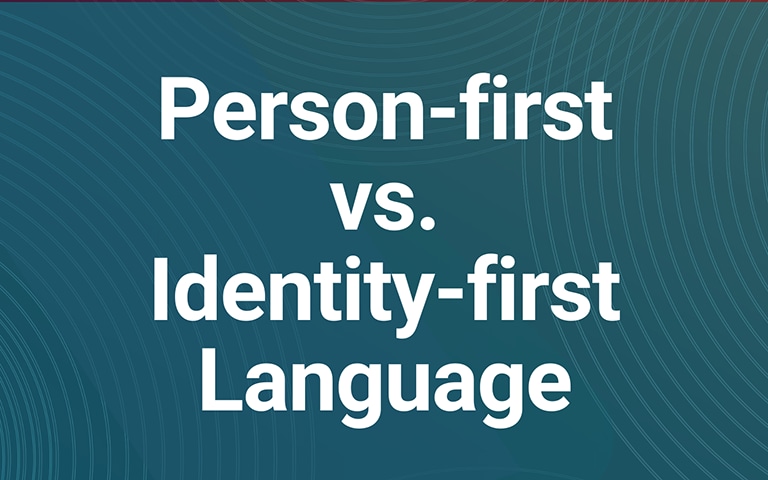
Does the Use of Person Centered Language Influence How People Who Have Committed Sex Offenses are Perceived?
By David Thornton, Ph.D.
This article is a continuation of the series in the ATSA FORUM’s Researchers’ Corner. Each article highlights recent published scientific research and summarizes it in a way that seeks to make it intelligible to clinicians. This article is about Belisle, Marshall and Butler (2024)’s experiment examining the effect of person first language.
Person centered language is now strongly encouraged for authors of papers in ATSA’s journal Sexual Abuse. Relatedly there is a push to adopt person-centered language in criminal justice so that instead of saying “offender” one might say “person who committed an offense”. The intent is humanize individuals who are involved with the criminal justice system. La Vinge (2016) have argued that this is a way of adopting a “do no harm” mindset, reducing stigma, and considering the whole person. This builds on a broader movement in favor of person-centered language in medical contexts. Belisle et al. (2024) propose that this may be particularly relevant to persons who have committed sex offenses as the community generally holds hostile attitudes to “sex offenders”. But is it actually the case that labels influence attitudes and behavior in the way presupposed by this line of argument? Belisle et al. investigate this in the context of an online course for criminal justice students.
The study involved undergraduates participating in an online Sex Crimes course. Some 64 of 80 students consented to participate in the study. Different versions of the course were prepared. These were identical except for the elements that were experimentally manipulated. In one version of the course the lecturer did not use person-centered language. In a second version the lecturer used person centered language. In a third version the lecturer also used person-centered language but a guest lecturer began the course with a five minute lecture that defined person centered language and explained its importance in a criminal justice setting. Participants completed the Perceptions of Sex Offender Scale (Harper & Hogue, 2015) before and after the course through the university’s learning management system. This quantative data was supplemented by collection of qualitative data from students’ reflection assignments.
Results showed that the mere use of person-centered language made no difference to attitudes regarding the sentencing and management of men who committed sex offenses, no differences to stereotype endorsement, and no differences to risk perception. However, when person-centered language was combined with the guest lecture about the nature of person-centered language and its significance, then large changes in attitudes regarding the sentencing and management of men who committed sex offenses occurred. Qualitative data suggested that this change involved a more differentiated view of men who commit sex offenses with a greater openness to rehabilitative interventions. Stereotype endorsement and risk perception were however unaffected by experimental condition, although by the end of the course, all groups attributed less risk.
A curious limitation of this paper was that it showed no awareness of Gwenda Willis’s work on the use of Person-First language. For example, Lowe and Willis (2020)’s paper that investigated how labels such as “sex offender” affected the willingness of people to volunteer to work with this population is of obvious relevance. In this study the manipulation was through the language in the questionnnaires themselves. They found that using person-centered language in the questionnaire led to people expressing more willingness to volunteer to work with men who had committed sex offenses. Interestingly qualitative analysis showed that the use of person-centered language carried across into how people talked about those who had committed sex offenses.
Putting the results of Belisle et al’s study with the earlier Lowe and Willis results suggests some implications. It appears that using person-centered language does not necessarily achieve its desired effect but can do so under some conditions. The nature of these conditions is not yet clear but we have some hints. In Belisle et al’s study, although the lecturer used person-centered language (in that condition), the language in the required readings would typically not have used it. This suggests that one speaker using person-centered language in the context of others not doing so, has little effect. In contrast, the guest lecture highlighted person-centered language and may perhaps have served to inoculate students against the usual effect of “sex offender” language. Indeed one wonders what the effect of such a lecture alone, without the lecturer using person-centered language, would have been. In contrast, by embedding person-centered language in the questionnaire they used, the Lowe and Willis study led the participants to use this language themselves (as they read the questions) and made this language more salient at the point the question was being asked.
References
Belisle, L. A., Marshall, E. A., & Butler, M. M. (2024). What About Language?: A Mixed Methods Examination of the Impact of Person-Centered Language on Students’ Perceptions of Individuals Who Commit Sex Offenses. Sexual Abuse, 0(0). https://doi.org/10.1177/10790632241283464
Harper, C. A., & Hogue, T. E. (2015). Measuring public perceptions of sex offenders: Reimagining the community attitudes toward sex offenders (CATSO) scale. Psychology, Crime
and Law, 21(5), 452–470. https://doi.org/10.1080/1068316X.2014.989170
La Vinge, N. G. (2016). People first: Changing the way we talk about those touched by the
criminal justice system. Urban Wire, Urban Institute. https://www.urban.org/urban-wire/
people-first-changing-way-we-talk-about-those-touched-criminal-justice-system
Lowe, G., & Willis, G. (2020). “Sex Offender” Versus “Person”: The Influence of Labels on Willingness to Volunteer With People Who Have Sexually Abused. Sexual Abuse, 32(5), 591-613. https://doi.org/10.1177/1079063219841904
